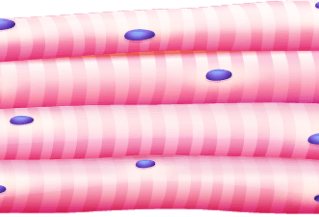(−)-Epicatechin Dosing of Adults with Beckers Muscular Dystrophy Shows Increase in Markers of Mitochondrial Biogenesis and Muscle Regeneration
Published February 2021

This 8-week, open-label study of a unique formulation and dosage of (-)-epicatechin was conducted in ambulatory adults with genetically confirmed Beckers Muscular Dystrophy (BMD).
Note that the formulation and dosage of (-)-epicatechin used in this clinical are relevant to our key ingredient, Mitokatylst™ in the product Mitokatylst™ – E.
The baseline of the trial subjects showed a severe loss of mitochondria cristae and significantly reduced levels of dystrophin (a protein that strengthens and protects muscle fibers in the heart and skeletal muscles).
Results were evaluated using muscle biopsies, electron microscopy, Western Blots, exercises, and grip strength.
Key Takeaways
- After 6 weeks, the muscle biopsy results showed an increase in three key areas of the mitochondria: a) increase in the transcriptional coactivators of genes involved in mitochondrial biogenesis, b) increase in the levels of mitofilin, a protein that controls and maintains mitochondrial cristae, and c) an increase in cristae which orchestrate cellular energy production.
- Markers of skeletal muscle regeneration — myogenin, myogenic regulatory factor-5, myoblast determination protein 1, myocyte enhancer factor-2, and structure-associated proteins, dysferlin, utrophin, and intracellular creatine kinase — increased. This indicates that skeletal muscle may have recovered or improved to some degree.
- Graded exercises — six-min walk, four-stair climb, and exercise cycle test — showed decreased heart rates and blood lactate levels plus increased oxygen consumption suggesting less fatigue during exercise.
Authors
Craig M. McDonald, Israel Ramirez-Sanchez, Björn Oskarsson, Nanette Joyce, Candace Aguilar, Alina Nicorici, Jonathan Dayan, Erica Goude, R. Ted Abresch, Francisco Villarreal, Guillermo Ceballos, Guy Perkins, Sundeep Dugar, George Schreiner, Erik K. Henricson


